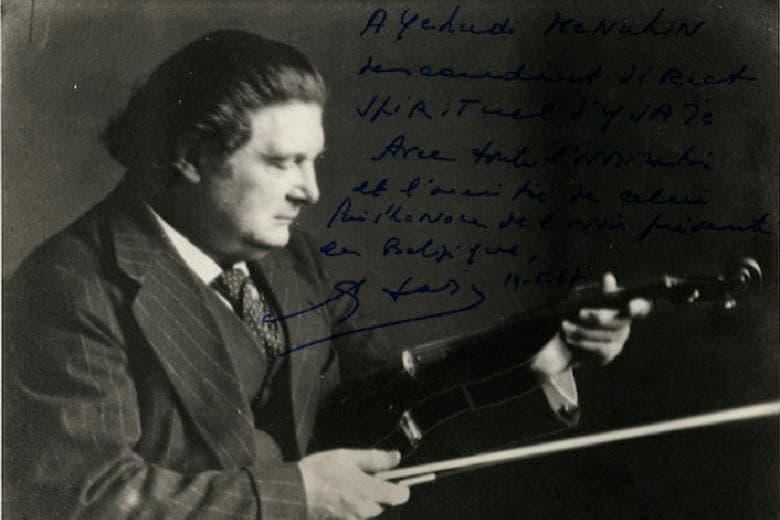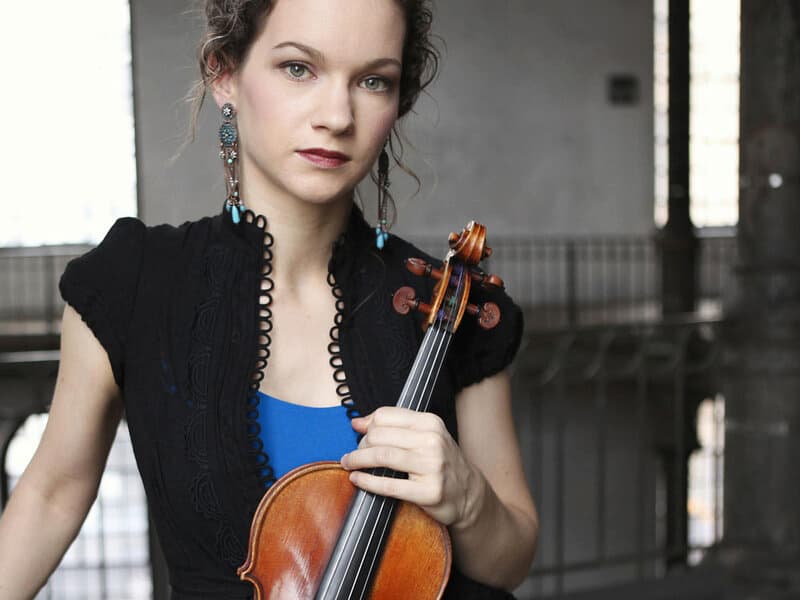Eugène Ysaÿe (1858–1931) wrote his Six Sonatas for Solo Violin in 1923 and in the century that has passed since their completion, he created one of the greatest studies for the violin. Ysaÿe was following a trail laid more than two hundred years earlier, with Bach’s Six Sonatas for Violin Solo (before 1720). Bach’s compositions, paired with a particularly inspirational performance by the Hungarian violinist Joseph Szigeti (1892–1973), drove Ysaÿe to create a work that would give him a new life in music.

Eugène Ysaÿe
Already having established himself as a virtuoso violinist with his first performances with the Concerts Colonne in Paris at age 27, he augmented his influence with a professorship at the Brussels Conservatory, leading the new Belgian violin school to new heights. His international tours spanned all of Europe and extended to Russia, and the US.
Composers including Claude Debussy, Camille Saint-Saëns, César Franck, and Ernest Chausson wrote works for him. It was his health concerns that took him away from active touring and more into teaching, conducting, and composition. The Six Sonatas for Solo Violin, op. 27, is one of his most famous works.
As a performer, he garnered praise everywhere for his compelling and highly original style. Pablo Casals claimed never to have heard a violinist play in tune before Ysaÿe. His ability to get a violin to sing was the basis of his art and both vibrato and rubato (a slight speeding up and slowing of the music tempo) were important in his style.
Violinist Hilary Hahn’s recent recording of the Six Sonatas came from both her long familiarity with the pieces and the realization that they were about to hit their centenary. She’d last worked on the pieces a decade earlier and knew that in taking them up again, being both familiar and unfamiliar, she could make a new statement with the works.
Eugène Ysaÿe: Sonata for Solo Violin in G Minor, Op. 27, No. 1 – I. Grave: Lento assai
Hahn started her work by listening to Ysaÿe’s own recordings of his music and in his ancient recordings, heard in them the same ideals of gesture and timing that she was working on developing in her own playing. When she made her recording, sandwiched in between concerts and travel, she attacked the sonatas in chronological order over seven weeks.

Hilary Hahn
Each of the sonatas is dedicated to a different violinist and Ysaÿe dedicated the first to Szigeti. From 13 to 15 June 1923, the notes poured from Ysaÿe, and he completed the better part of the draft of the work over those three days. No. 2 was for Jacques Thibaud, No. 3 for George Enescu, No. 4 for Fritz Kreisler, No. 5 for Mathieu Crickboom, and No. 6 for Manuel Quiroga. Crickboom, Enescu, and Thibaud had all been his students in Brussels; Quiroga was a student of Thibaud’s. More than just dedicating the works to these six violinists, Ysaÿe also wrote each work in the style of that performer.
Eugène Ysaÿe: Sonata No. 2 in A minor, Op. 27, No. 2 – III. Danse des ombres. Sarabande (lento)
Bach is very much part of the second sonata, especially since the opening quotes Bach’s familiar Prelude from the E major Partita, which Ysaÿe used as a warmup. Throughout this sonata, one familiar melody recurs in each movement: the Dies irae melody from the Requiem Mass. The third movement of the second sonata is a sarabande, a dance form frequently used by Bach, and here is the basis for a variation set (with reference to the Dies irae appearing as well).
Eugène Ysaÿe: Sonata No. 3 in D minor, Op. 27, No. 3, “Ballade”
Not all of Ysaÿe’s sonatas are multi-movement. His third sonata, written for George Enescu, is one movement, entitled Ballade. It is the freest of all the sonatas and employs several different string techniques, including the pizzicato at the opening. Ysaÿe frequently performed with Enescu, and the virtuoso writing of this sonata is said to suggest Enescu’s own outgoing, exuberant character.
Hahn’s performance is one of focused attention and technical skill that conveys both Ysaÿe’s mastery as a composer and what he brought to the pieces as a performer himself.

Ysaÿe: 6 Sonatas for Violin Solo, Op. 27
Performed by
Hilary Hahn
Official Website
For more of the best in classical music, sign up for our E-Newsletter


